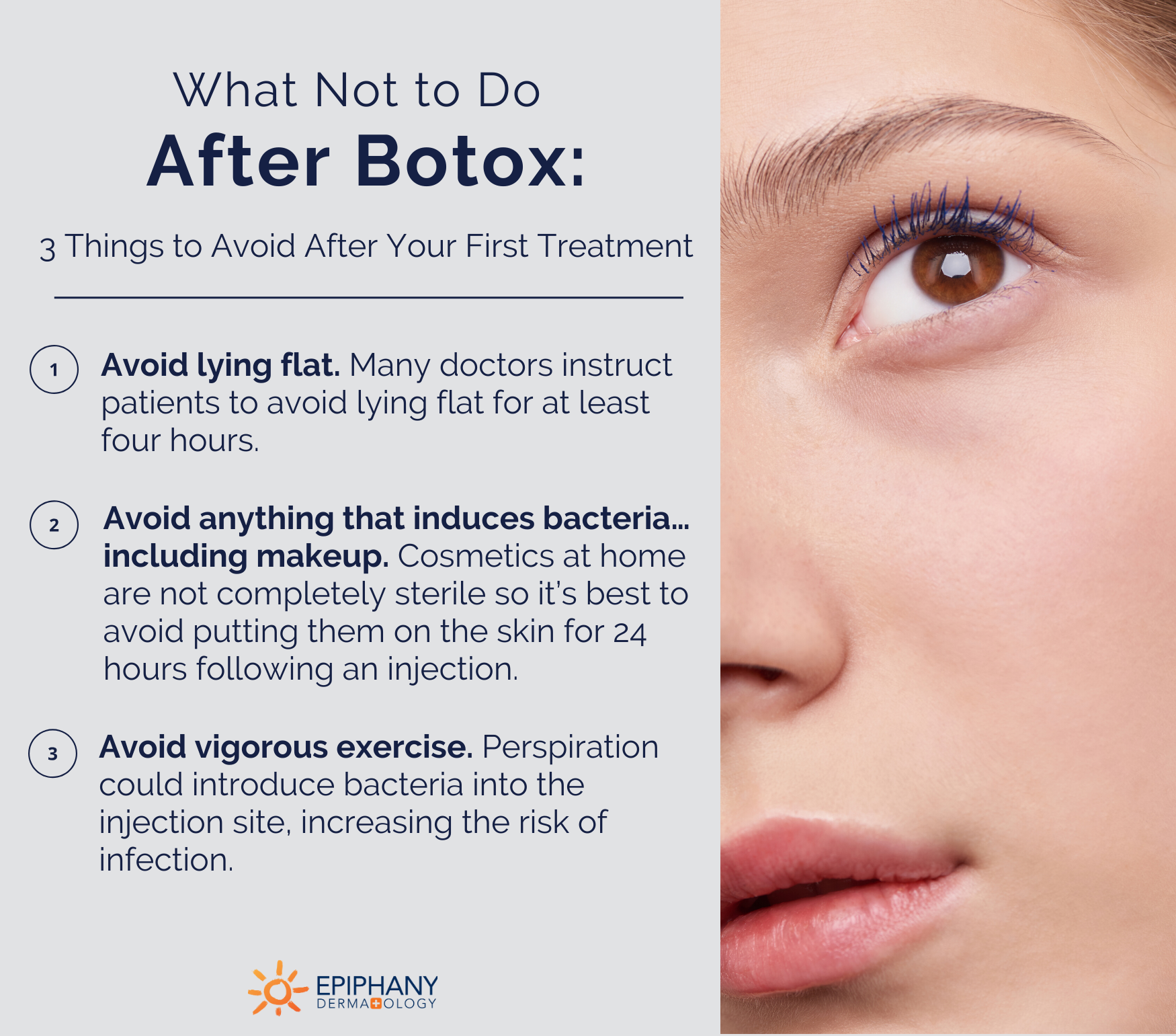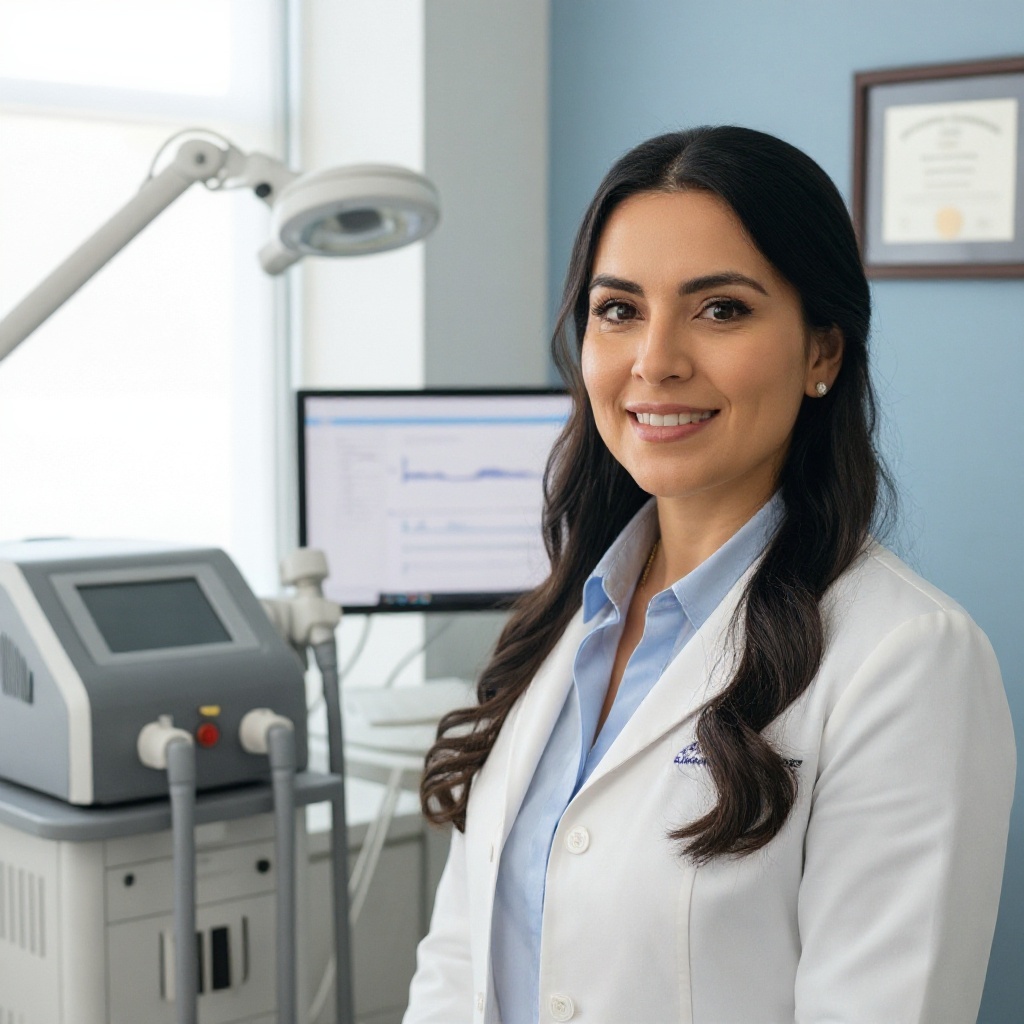Exercising After Botox: The Ultimate Guide to Safe Workouts

Key points
- Eyelid Ptosis: Drooping of the upper eyelid.
- Brow Ptosis: A heavy or lowered eyebrow.
- Asymmetrical Smile: If Botox intended for another area moves into muscles controlling the mouth.
You’ve just had your Botox treatment and are feeling fantastic, ready to hit the gym. But before you lace up your sneakers, it’s crucial to understand the rules around exercise after your appointment. The advice to take a brief break from your fitness routine isn't just a suggestion—it's key to ensuring your results are flawless and free of complications.
This guide synthesizes advice from top dermatologists, clinical studies, and patient experiences to provide a definitive resource on navigating your workouts post-Botox.
Why Timing Your Post-Botox Workout Matters
The primary reason practitioners advise against immediate exercise is to prevent Botox migration. Botox is a neurotoxin (onabotulinumtoxinA) that works by temporarily blocking nerve signals in the muscles where it's injected, causing them to relax and soften wrinkles.
Immediately after injection, the product needs time to settle and bind to the nerve receptors in the target muscle. Strenuous activity increases your heart rate and blood flow throughout the body. This surge in circulation could theoretically cause the liquid Botox to spread to unintended muscles, leading to potential side effects like:
- Eyelid Ptosis: Drooping of the upper eyelid.
- Brow Ptosis: A heavy or lowered eyebrow.
- Asymmetrical Smile: If Botox intended for another area moves into muscles controlling the mouth.
Beyond migration, working out too soon can also increase swelling and bruising at the injection sites.
 Image Source: Epiphany Dermatology
Image Source: Epiphany Dermatology
The Great Debate: How Long Should You Actually Wait to Exercise?
If you search online, you'll find a confusing range of answers, from waiting just a couple of hours to a full 48. This inconsistency exists because there's a lack of large-scale clinical trials pinpointing an exact timeframe. Most recommendations are based on clinical experience and an understanding of how the product works.
Here’s a breakdown of the most common and trusted guidelines.
The General Consensus: The 24-Hour Rule
The most widely accepted advice from dermatologists and plastic surgeons is to wait at least 24 hours before resuming any strenuous exercise. This conservative waiting period gives the Botox ample time to fully bind to the target muscles, significantly minimizing the risk of migration.
The 4-Hour Rule for Lighter Activity
For very light activities, the waiting period is shorter. Most providers recommend you avoid lying down or bending over for at least 4 hours post-treatment. Following this logic, gentle activities that keep you upright are often considered safe after this initial window.
A Spectrum of Advice
While 24 hours is the standard, some sources offer different timelines:
- The American Academy of Dermatology has suggested waiting just 2 hours.
- More cautious providers may advise waiting 48 hours for high-impact workouts, especially for athletes.
Crucial Takeaway: The single most important rule is to follow the specific aftercare instructions provided by your injector. They know the details of your treatment and can give you the most personalized and accurate advice.
Risk Stratification: What Counts as "Strenuous" Exercise?
The term "strenuous" can be subjective. In the context of Botox aftercare, it refers to any activity that significantly elevates your heart rate (a heart rate over 130 bpm is a good benchmark), causes heavy sweating, or involves high impact and pressure on the face.
Workouts to Avoid for at Least 24-48 Hours
- Running & High-Impact Cardio: Jogging, sprinting, and aerobics increase circulation and cause bouncing movements.
- Heavy Weightlifting: Straining can increase pressure in the face.
- High-Intensity Interval Training (HIIT): The explosive nature of these workouts is best avoided.
- Hot Yoga & Saunas: Intense heat dilates blood vessels, increasing facial blood flow. Plus, wiping away heavy sweat can put pressure on injection sites.
- Swimming: Goggles and swim caps apply direct pressure to common treatment areas like the forehead and around the eyes.
- Cycling (Intense): While a leisurely ride may be fine, intense cycling raises your heart rate, and helmets can apply pressure.
- Inversions: Any yoga poses, Pilates positions, or stretches that place your head below your heart (e.g., Downward-Facing Dog) should be skipped.
Safe Exercises You Can Do Sooner
After the initial 4-hour upright period, these activities are generally considered safe:
- Walking: A casual walk at a normal pace is perfectly fine.
- Gentle Stretching: Upright stretches that don't involve deep bending are acceptable.
- Light Housework: Your daily chores won't compromise your results.
 Image Source: Line Eraser MD
Image Source: Line Eraser MD
The Science vs. The Myth: What's the Real Clinical Risk?
While caution is paramount, it's also important to separate established science from overly cautious myths.
How Quickly Does Botox Actually Bind?
Modern understanding suggests that Botox begins binding to nerve receptors quite rapidly. Some experts argue that the product is largely "locked in" within the first couple of hours, making the risk of migration from light activity very low. The extended 24-hour waiting period is largely a "better safe than sorry" approach to eliminate risk and prevent other issues like bruising.
The Surprising Benefit of Facial "Exercise"
While you shouldn't hit the gym, you can "work out" your face. A study in the Journal of the American Academy of Dermatology found that performing small facial exercises—like frowning, smiling, and raising the eyebrows—for an hour after treatment may help speed up the onset of Botox results by a day. These gentle contractions may help the muscle take up the neurotoxin more readily.
A Note on Alternative Neurotoxins
For serious athletes or those with tight schedules, some alternatives may offer a shorter downtime. As noted in Shape Magazine, a neurotoxin like Xeomin contains no preservative proteins. This "purer" formulation allows it to bind to the muscle almost immediately, potentially reducing the required waiting period for exercise to as little as 48 hours for even intense workouts.
Beyond the Gym: Other Essential Aftercare Rules
To protect your investment and achieve the best outcome, remember these other key aftercare tips for the first 24 hours:
- DO NOT rub, massage, or apply pressure to the treated areas.
- AVOID excessive heat from saunas, hot tubs, or long, hot showers.
- REFRAIN from consuming alcohol, as it can thin the blood and increase the risk of bruising.
- POSTPONE other facial treatments like facials, microdermabrasion, or using facial rollers.
- STAY UPRIGHT for at least 4 hours after your injections.
The Bottom Line: Prioritize Safety for the Best Results
While the risk of a serious complication from exercising after Botox is low, following aftercare guidelines is the best way to ensure a perfect result. Waiting 24 hours to resume your normal fitness routine is a small price to pay for the smooth, natural-looking outcome you want.
Always consult with a board-certified dermatologist or plastic surgeon for your treatments and follow their expert guidance. A day of rest is your first step toward enjoying your refreshed look for months to come.
References
- Isaac, M. (2023). When Can I Exercise After BOTOX®? MI Skin Dermatology Center. Retrieved from https://www.mi-skin.com/blog/when-can-i-exercise-after-botox/
- Sissons, B. (2024). Do's and Don'ts of Exercising After Botox. Medical News Today. Retrieved from https://www.medicalnewstoday.com/articles/drugs-exercising-after-botox
- Burke, R. (2024). Exercise After Botox: When to Hit the Gym for Optimal Results. Renee Burke, MD. Retrieved from https://reneeburkemd.com/blog/exercise-after-botox-when-to-hit-the-gym/
- LaBrecque, S. (n.d.). Is It Really Necessary to Avoid Working Out After Botox? Shape. Retrieved from https://www.shape.com/lifestyle/beauty-style/working-out-after-botox
- Alam, M., et al. (2018). Effect of postinjection facial exercise on time of onset of botulinum toxin for glabella lines: A randomized controlled trial. Journal of the American Academy of Dermatology. https://www.jaad.org/article/S0190-9622(18)32743-9/fulltext32743-9/fulltext)

About the author
Elena Vance, MD, is a double board-certified dermatologist and pediatric dermatologist. She is an assistant professor of dermatology at a leading medical university in California and is renowned for her research in autoimmune skin disorders.